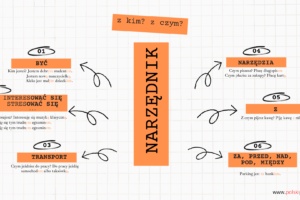
Exploring the Rich Traditions of Easter in Poland: A Guide for Foreigners
Exploring the Rich Traditions of Easter in Poland: A Guide for Foreigners
Easter, known as Wielkanoc in Poland, is one of the most important holidays in the country. It is a time for family gatherings, traditional meals, and religious celebrations. The customs and traditions of Easter in Poland are deeply rooted in the country’s history and culture and are still followed today with great enthusiasm.
Roots of celebrating Easter in Poland
 The celebration of Easter in Poland has its roots in both Christian and pagan traditions. Christianity came to Poland in the 10th century, and the country became a predominantly Christian nation. As a result, Easter is an important religious holiday in Poland. In the early days of Christianity, Easter was celebrated as the resurrection of Jesus Christ from the dead. It was a time of great joy and celebration, and the holiday was marked by church services, feasting, and the exchange of gifts. This tradition has continued in Poland to this day, with many people attending Mass on Easter Sunday and participating in other religious observances.
The celebration of Easter in Poland has its roots in both Christian and pagan traditions. Christianity came to Poland in the 10th century, and the country became a predominantly Christian nation. As a result, Easter is an important religious holiday in Poland. In the early days of Christianity, Easter was celebrated as the resurrection of Jesus Christ from the dead. It was a time of great joy and celebration, and the holiday was marked by church services, feasting, and the exchange of gifts. This tradition has continued in Poland to this day, with many people attending Mass on Easter Sunday and participating in other religious observances.
Easter in Poland is celebrated on the first Sunday following the first full moon after the vernal equinox. This means that the date of Easter in Poland can vary from year to year, but it generally falls between late March and late April. In 2023, Easter Sunday in Poland will be celebrated on April 9th.
Significant days in the Easter period in Poland:
Easter period starts about a week before the main holidays. The most significant days in the Easter period are:
 Palm Sunday – Niedziela Palmowa: This is the Sunday before Easter, and it marks the beginning of Holy Week. It is called Palm Sunday because it is traditional to carry palm fronds or other branches in a procession to commemorate Jesus’ entry into Jerusalem.
Palm Sunday – Niedziela Palmowa: This is the Sunday before Easter, and it marks the beginning of Holy Week. It is called Palm Sunday because it is traditional to carry palm fronds or other branches in a procession to commemorate Jesus’ entry into Jerusalem.
Holy Thursday – Wielki Czwartek: This is the Thursday before Easter, and it commemorates the Last Supper that Jesus shared with his disciples before his crucifixion. It is also the day on which the Catholic Church celebrates the institution of the Eucharist.
Good Friday- Wielki Piątek: This is the Friday before Easter, and it commemorates the crucifixion and death of Jesus. It is a day of mourning and reflection, and many churches hold solemn services to mark the occasion.
 Holy Saturday- Wielka Sobota: This is the day of waiting and anticipation. In Poland, it is traditional to bring baskets of food (koszyczek wielkanocny) to the church to be blessed on this day. In the morning mainly children (but also adults) are painting traditional easter eggs – pisanki.
Holy Saturday- Wielka Sobota: This is the day of waiting and anticipation. In Poland, it is traditional to bring baskets of food (koszyczek wielkanocny) to the church to be blessed on this day. In the morning mainly children (but also adults) are painting traditional easter eggs – pisanki.
 Easter Sunday- Niedziela Wielkanocna: This is the most important day in the Easter period, and it celebrates the resurrection of Jesus. Many people attend church services on Easter Sunday, and it is traditional to share a meal with family and friends.
Easter Sunday- Niedziela Wielkanocna: This is the most important day in the Easter period, and it celebrates the resurrection of Jesus. Many people attend church services on Easter Sunday, and it is traditional to share a meal with family and friends.
Easter Monday- Poniedziałek Wielkanocny: This is the day after Easter Sunday, and it is a public holiday in Poland. It is traditional to engage in water fights or Śmigus-Dyngus as it is called in Polish, where people drench each other with water as a way of symbolically cleansing themselves of sin.
Traditional Easter food

Traditional Easter food in Poland is a very important part of the holiday celebrations, and it is a time when families gather together to enjoy special meals that are prepared with care and love. Here are some of the most popular and traditional:
Easter ham (szynka wielkanocna): This is a ham that has been cured and smoked, and it is often glazed with honey, mustard, or other sweet and savory sauces.
Easter bread (chałka): This is a sweet bread that is similar to challah and is often braided with raisins and almonds. It is usually served for breakfast on Easter Sunday.
Easter cake (mazurek wielkanocny): This is a type of cake that is made with a shortcrust pastry base and topped with a variety of sweet toppings, such as dried fruits, nuts, and jam.
Easter eggs (jajka wielkanocne): Eggs are an important symbol of Easter in Poland, and they are often decorated with intricate patterns and bright colors. They are also used in a variety of dishes, such as egg salad, deviled eggs, and egg-based casseroles.
Horseradish (chrzan): This is a spicy condiment that is made with grated horseradish root and vinegar. It is typically served with ham or other savory dishes.
Babka – type of cake made from a yeast-based dough. The name “babka” means “grandmother” in Polish, and the cake is said to resemble the shape of an old woman’s skirt.
Vegetable salad– (sałatka jarzynowa) – a vegetable salad made with boiled vegetables, mayonnaise, and often served as a side dish for Easter.
Żurek – traditional Easter soup, made with sour rye flour and is often served with boiled eggs and white sausage.
Overall, traditional Easter food in Poland is a rich and varied cuisine that reflects the country’s cultural and culinary heritage. It is a time when families come together to enjoy delicious meals and celebrate the holiday with joy and happiness.
Easter wishes
In Poland, the most common Easter wishes are Wesołych Świąt! which translates to “Happy Holidays!” or “Happy Easter!” Another common phrase, which refers more to the religious aspect of holidays, is Wesołego Alleluja! which means “Happy Easter Alleluia!”
First Easter in Poland
If you are spending your first Easter in Poland, there are several things that you should take into consideration to make the most of this important holiday. Here are some tips to help you navigate the traditions and customs of Easter in Poland:
- Be aware of the holiday schedule: Easter in Poland is a major holiday, and many businesses and services may be closed during this time. Make sure to plan ahead and be aware of any changes to the regular schedule. During the days preceding Easter shopping malls, markets, and bazaars are extremely crowded. Keep that in mind while planning your shopping.
- Familiarize yourself with the customs and traditions: Easter in Poland is steeped in tradition, and there are many customs and practices that are unique to the country. Take the time to learn about these traditions, such as the blessing of the Easter basket or pouring water on Easter Monday.
- Try the traditional foods: As mentioned earlier, traditional Easter food in Poland is an important part of the holiday celebrations. Be sure to try some of the local dishes, such as white borscht or Easter ham, to get a taste of the traditional cuisine.
- Be open to new experiences: Spending Easter in Poland may be different from what you are used to, but it can also be a wonderful opportunity to learn about a new culture and make new friends. Be open to new experiences and embrace the holiday spirit.



